Rare Rides Icons: The History of Stutz, Stop and Go Fast (Part IX)

We pick back up in the Stutz story today, at a time when (once again) all was new and promising at the luxury brand. Under the company’s new ownership, Stutz had the funding for Italian craftsmanship and hand-built goodness. The all-new Stutz Blackhawk entered production in 1971.
Nineteen feet long and full of wood, precious metals, and optional mink upholstery, the Blackhawk asked for a stunning amount of money that was far greater than domestic personal luxury coupes and more than a Rolls-Royce. At a base ask of $22,500 ($162,533 adj.) in 1971 dollars, there were few cars that actually competed with the Blackhawk’s purchasable exclusivity. And said exclusivity attracted some very wealthy people. Let’s talk celebrity status.
Mind you, the Stutz showrooms of old attracted the wealthy too. Art Deco marketing materials showed luxurious scenes and made safety promises, and carried memories of the company’s racing pedigree. Stutz cars of the Twenties drew the sort of generational wealth Americans who spent six figures (adjusted) on a car in the times nearing the Great Depression.
But in the Seventies, the revived Stutz clientele was a bit different. The brand immediately found a base among the rich and famous, primarily of the entertainer variety. The very “first” Blackhawk was sold to none other than Elvis Presley. Presley plunked down $26,500 ($193,371 adj.) for his heavily modified Grand Prix. He paid in October 1970, before the Blackhawk was actually in production. In reality, he purchased the second prototype that was built as the company’s proof of concept.
The first prototype was already spoken for, as it was the personal ride of company president James O’Donnell. Differences between the two concept cars were present, as they were built by different coachbuilders. As mentioned previously, the first prototype was built at great expense by Ghia, while the actual build work was initially contracted to Carrozzeria Padane. That firm constructed the second prototype, probably to prove they could build the car to the same quality that the more well-known Ghia did.
Elvis wasn’t the only musical entertainer past the prime of their career interested in the second new Blackhawk, as Frank Sinatra raised his hand too. Elvis won out in the end because he was a bit less picky than Sinatra. The deal to purchase the prototype had a string attached: Stutz distributor Jules Meyers was permitted to display the Blackhawk at the LA Auto Show in 1970, and the buyer would pose for PR pictures with the Blackhawk when he took delivery.
Sinatra said, “I can’t go for that” or similar, and declined. Elvis was more ready to accept that others should see his personal vehicle and was also obliged in the photo op. Shortly after delivery, Elvis sent his Blackhawk off to tasteful modifier George Barris for some edits. He also spent a pretty penny in January of 1971 when he had almost unheard of technology – a car phone – installed in the Blackhawk. The enormous appliance asked $1,467 ($10,597 adj.).
After all the expense, corporate publicity strings, and impressive edits, Elvis enjoyed his Blackhawk for around six months in total. In July of 1971, a driver in Elvis’ employ crashed the Blackhawk and totaled it. With a huge insurance claim pending, the distributor offered The King $1,000 for the wrecked coupe. Given the phone in the center console was worth more than that offer, Elvis decided to keep the wreckage and put it in storage.
That wasn’t the end of the prototype though; it was restored years later with an assemblage of parts from various sources and put on display at Graceland. The customized Blackhawk is still on display there today. Elvis was very impressed with his short Blackhawk stint and would proceed to buy three more, and lease a fourth. A 1971 example was a gift for his personal doctor, Elias Ganhem (pictured here). Elvis preferred only white and black Blackhawks, and the last one he purchased in 1973 is on display alongside the restored prototype.
A super fan of the revived Stutz, Elvis seemingly spent more on Blackhawks than (almost) anyone else. The initial dealing with Stutz must have left Sinatra cold, because he stayed away from the brand. At least he received an entire special edition of the Imperial bearing his name a decade later, though that didn’t end well either.
But other celebrities came calling for their own garish Blackhawk. Early adopters like Lucille Ball and Dick Martin in 1971 were joined by Sammy Davis Jr., who purchased a husband and wife pair in 1972. Dean Martin created a similar history to Elvis with his Blackhawk purchases and bought three. He was at the wheel of his 1972 example when he crashed it, and at the time it unironically wore a vanity plate: “DRUNKY.”
Other buyers through the early seventies included Evel Knievel, Wilson Pickett, Luigi Colani, and baseball player Lou Brock in 1974. Musical talents like Johnny Cash and Johnnie Taylor purchased in 1975. Bond villain actor Curt Jurgens bought a Blackhawk in 1977 and was joined a year later in the ownership club by Erik Estrada.
In the early Eighties, the brand earned a raft of new celebrity owners like Jerry Lewis, Billy Joel, Elton John, Paul McCartney, Al Pacino, and Barry White, with additional overdue purchases from Liberace and Wayne Newton. George Foreman had one, and so did Tom Jones. Willy Nelson bought a Blackhawk, but the singular purchase paled in comparison to the biggest fan of all, the Shah of Iran. He owned 12.
It’s almost hard to imagine a single coachbuilt-type vehicle in modern times attracting such a large group of famous owners. Especially one that had domestic underpinnings like the Blackhawk. But the coupe stood out and was apparently just right for the times and the image these stars wanted to project. During its tenure, the Blackhawk was well represented in movies and television, too. It appeared in no less than five major motion pictures, as well as some appearances in TV shows like Columbo.
As the folks at Stutz saw their only model gain in popularity and standing with the Hollywood elite types, the price of the Blackhawk increased accordingly. The price jumps weren’t small inflation-driven increases either, as we’ll see here. By 1974 the base price was $35,000 ($215,936 adj.). There was quite a jump the following year, as in 1975 the Blackhawk commanded at least $41,500 ($229,009 adj.) Pricing continued to climb throughout the remainder of the decade, with Stutz raking in the dough because of its exclusivity. In 1981 the Blackhawk had doubled over its Seventies ask and was priced at $84,500 ($279,242 adj.). That price paled in comparison to the convertible Stutz offered, which was advertised without irony as the most expensive car on sale. But we’ll talk about that another day.
The Blackhawk was sold in several different series, as designers continued to fiddle with Virgil Exner’s original work. Changes nearly every year meant things kept fresh, and each “new” Blackhawk could continue to command huge money. We’ll talk about the various series of the Blackhawk next time, as well as the amazingly expensive D’Italia convertible.
[Images: Stutz, YouTube]

Interested in lots of cars and their various historical contexts. Started writing articles for TTAC in late 2016, when my first posts were QOTDs. From there I started a few new series like Rare Rides, Buy/Drive/Burn, Abandoned History, and most recently Rare Rides Icons. Operating from a home base in Cincinnati, Ohio, a relative auto journalist dead zone. Many of my articles are prompted by something I'll see on social media that sparks my interest and causes me to research. Finding articles and information from the early days of the internet and beyond that covers the little details lost to time: trim packages, color and wheel choices, interior fabrics. Beyond those, I'm fascinated by automotive industry experiments, both failures and successes. Lately I've taken an interest in AI, and generating "what if" type images for car models long dead. Reincarnating a modern Toyota Paseo, Lincoln Mark IX, or Isuzu Trooper through a text prompt is fun. Fun to post them on Twitter too, and watch people overreact. To that end, the social media I use most is Twitter, @CoreyLewis86. I also contribute pieces for Forbes Wheels and Forbes Home.
More by Corey Lewis
Latest Car Reviews
Read moreLatest Product Reviews
Read moreRecent Comments
- Turbo Is Black Magic My wife had one of these back in 06, did a ton of work to it… supercharger, full exhaust, full suspension.. it was a blast to drive even though it was still hilariously slow. Great for drive in nights, open the hatch fold the seats flat and just relax.Also this thing is a great example of how far we have come in crash safety even since just 2005… go look at these old crash tests now and I cringe at what a modern electric tank would do to this thing.
- MaintenanceCosts Whenever the topic of the xB comes up…Me: "The style is fun. The combination of the box shape and the aggressive detailing is very JDM."Wife: "Those are ghetto."Me: "They're smaller than a Corolla outside and have the space of a RAV4 inside."Wife: "Those are ghetto."Me: "They're kind of fun to drive with a stick."Wife: "Those are ghetto."It's one of a few cars (including its fellow box, the Ford Flex) on which we will just never see eye to eye.
- Oberkanone The alternative is a more expensive SUV. Yes, it will be missed.
- Ajla I did like this one.
- Zerofoo No, I won't miss this Chevrolet Malibu. It's a completely forgettable car. Who in their right mind would choose this over a V8 powered charger at the rental counter? Even the V6 charger is a far better drive.

























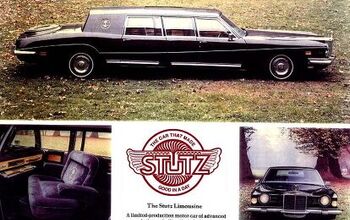

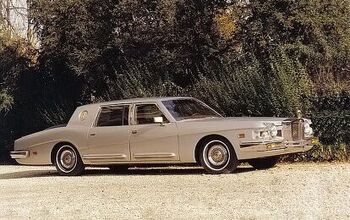
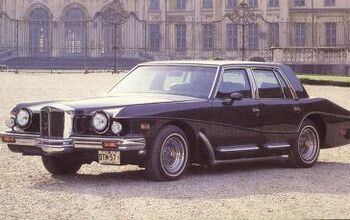
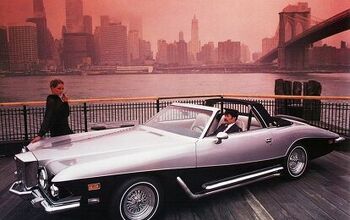






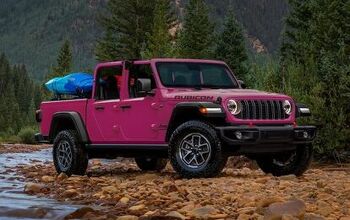



Comments
Join the conversation
Wow, talk about the perfect Elvis-mobile... And by all accounts, Dean Martin's drunkenness was largely an act.
"In July of 1971, a driver in Elvis’ employ crashed the Blackhawk and totaled it." Which is exactly why I don't have a driver. (Ok, one reason. The other reasons include never going anywhere and not having any money.)